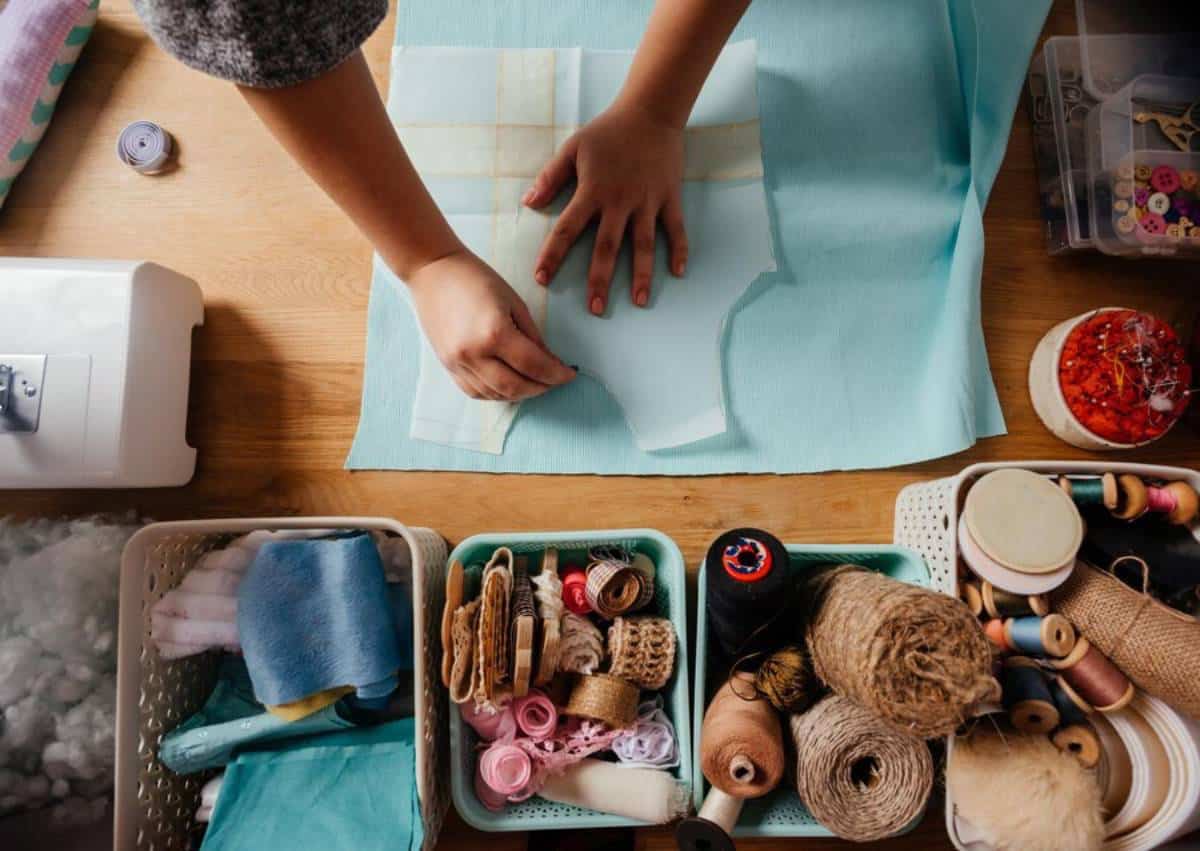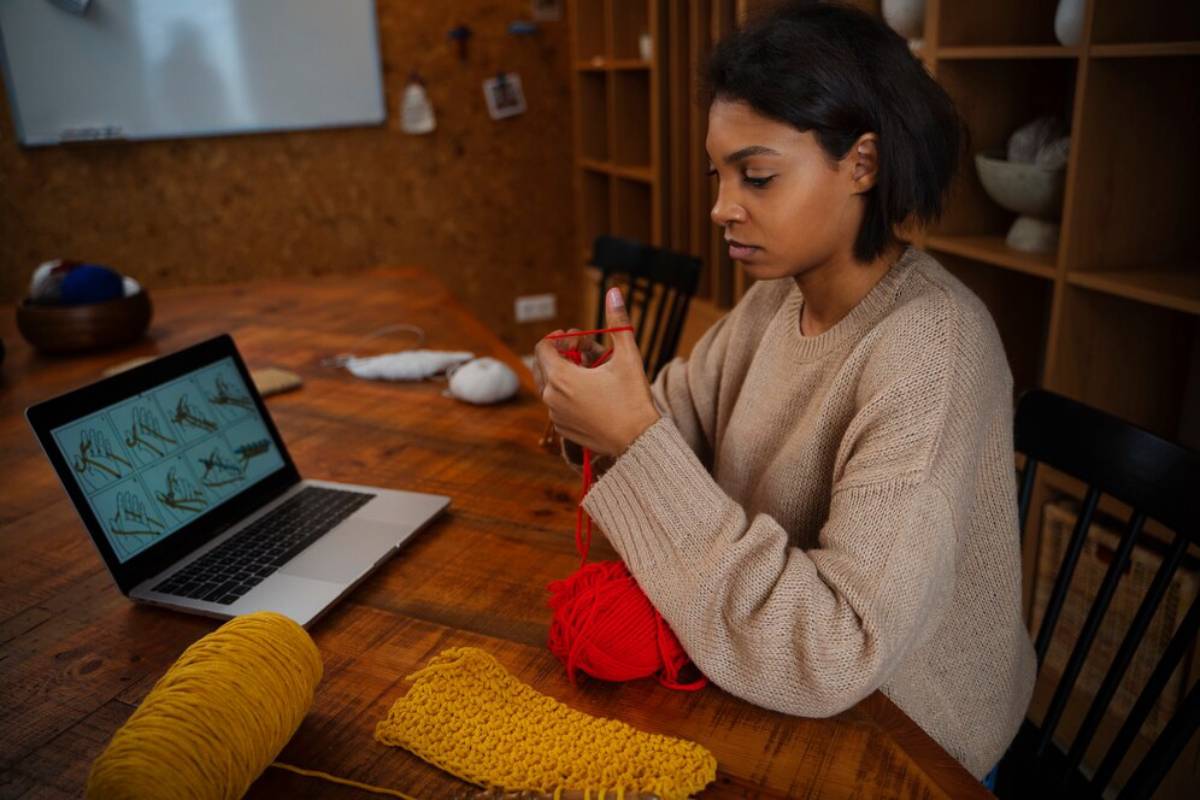
How to Start a DIY Crafting Hobby from Scratch
In today’s rat race, having a creative outlet is a saving grace and therapeutic. For example, you can start a new hobby, like DIY crafting, express yourself, create custom-made items, and gradually build a side business.
The UK craft community is thriving as of October 2023. DIY projects are increasing, allowing people to get creative and relieve stress. How to Make DIY Projects Enjoyable and Therapeutic: This guide comes with helpful steps, meaningful tips, and things you may want to know to help you get started so you enjoy the process and find it fulfilling.
Understanding the Core of DIY Crafting
DIY crafting, or “Do It Yourself,” means making items by hand using various materials and techniques. This hobby allows you to create unique pieces and promotes sustainability by reusing materials. The choices are endless, from knitting and sewing to woodworking and papercrafts. The key is to find a niche that fits your interests and skills, letting your creativity grow.
The Importance of DIY Crafting
Engaging in DIY crafting offers many benefits beyond making items. It gives a sense of achievement, improves problem-solving skills, and provides a way to express yourself. Crafting can also be social, connecting you with others through workshops, online forums, and craft fairs. Additionally, crafting promotes mindfulness, helping to reduce stress and anxiety.
Pro Tip: Invest in Quality Tools: While cheap tools are tempting, quality equipment can improve your crafting experience and results.
Quick Guide / Checklist
Before starting specific projects, refer to this quick checklist to guide your first steps:
- Identify Your Interests: Figure out which type of crafting interests you most, like knitting or painting.
- Gather Basic Materials: Start with essential tools and materials for your chosen craft.
- Set Up a Workspace: Create an organised and inspiring designated area for crafting.
- Research and Learn: Use online tutorials, books, and workshops to build your skills.
- Start Small: Begin with simple projects to build confidence before tackling more complex creations.
- Join a Community: Connect with fellow crafters to share ideas and stay motivated.
Important Tip: Mistakes are part of learning. Use them to enhance your skills.
Step-by-Step Guide (How to Practise)
Step 1: Explore and Choose Your Craft

Start by exploring different crafts to find what excites you. Visit local craft stores, browse online platforms like Pinterest, or attend craft fairs for inspiration. Once you have options, choose a craft that matches your interests and skill level.
Step 2: Gather Essential Materials and Tools
Each craft needs specific materials and tools. For example, knitting requires yarn and needles, while painting requires brushes and canvases. Begin with essential supplies and expand your collection as you gain experience. Many craft stores offer starter kits that include everything you need.
Step 3: Create a Dedicated Crafting Space
A designated crafting area is vital for staying organised and focused. Whether it’s a corner of a room or a dedicated studio, ensure your space is well-lit, comfortable, and has storage for your materials. A tidy workspace boosts creativity and productivity.
Step 4: Learn and Practise
Use resources like online tutorials, workshops, and books to learn techniques for your chosen craft. Practice regularly to improve your skills and build confidence. Don’t hesitate to experiment and make mistakes; they are part of the learning process.
Step 5: Start with Simple Projects
Begin with small, manageable projects to practice basic techniques. As you gain confidence, gradually take on more complex creations. Celebrate your achievements, no matter how small, to motivate yourself to keep learning.
Step 6: Connect with the Crafting Community
Join online forums, social media groups, or local crafting clubs to connect with other enthusiasts. Sharing progress, seeking feedback, and exchanging ideas can enhance your experience and offer valuable support.
Points to Remember
- Stay organised: Tidy your materials and tools to reduce frustration and improve efficiency.
- Set Realistic Goals: Start with achievable projects and gradually increase complexity as your skills grow.
- Prioritise Safety: Always follow safety guidelines, especially when using sharp tools or hazardous materials.
Best Practices & Additional Insights
Enhancing Your Crafting Experience
To enjoy your DIY crafting hobby more, consider these best practices:
- Document Your Progress: Keep a journal or blog to track your projects, challenges, and successes. This can motivate and inspire you.
- Stay Inspired: Regularly seek inspiration from nature, art, and other crafters. This can spark new ideas.
- Experiment with Techniques: Don’t hesitate to try new techniques or mix different crafts to create unique pieces.
- Attend Workshops and Classes: Participating in workshops can help you learn and connect with other crafters.
Overcoming Common Challenges
- Time Management: Balancing crafting with other responsibilities can be challenging. To maintain consistency, set aside time each week for crafting.
- Creative Blocks: If you hit a creative block, take a break, explore new inspirations, or try a different craft to refresh your creativity.
- Material Costs: Crafting can be costly, but you can cut expenses by buying in bulk, using recycled items, or swapping supplies.
FAQs

1. What is the best craft for beginners?
The best craft for beginners depends on personal interests. Popular options include knitting, embroidery, and paper crafts, as they require minimal tools and have plenty of learning resources.
2. How much time should I dedicate to crafting?
The time you dedicate to crafting depends on your schedule and goals. Starting a few hours each week can help build consistency and let you progress comfortably.
3. Can I make money from my crafting hobby?
Many crafters turn their hobbies into side businesses by selling their creations online or at local markets. Building a strong portfolio and marketing your work can help you earn from your hobby.
4. How do I stay motivated in my crafting journey?
Set achievable goals, celebrate small wins, and connect with other crafters to stay motivated. Regularly seeking new inspirations and challenges can also keep your crafting journey exciting.
Your Crafting Journey Begins Now
But how do you venture out into the world of DIY crafting? With dedication, persistence, and the ability to embrace the moment, this guide will take you beyond frustration and into a fulfilling hobby. The options and opportunities are infinite, whether you create for enjoyment or hope to do your craft for profit. Bring out your materials, make space and create! Others may be able to help you if there is a specific area you need assistance with. Happy crafting!
With this guide, you are on your way to starting a successful DIY crafting hobby. Just enjoy the ride, take lessons, and meet other crafters along the way. If you’re ready to start, peruse our beginner-friendly crafting project list today.